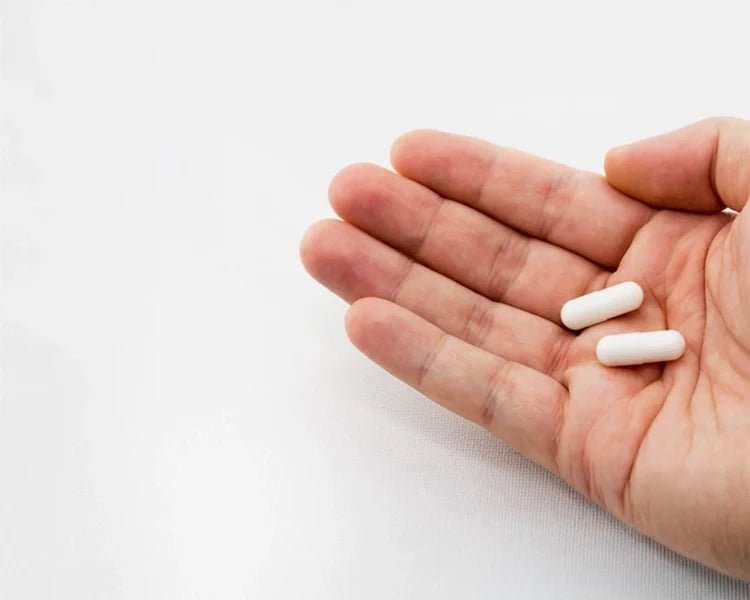Education
Are French fries and chips a health hazard?
Fried foods, especially those based on carbohydrate products, are an integral part of our diet. However, more and more research indicates that the frying process may produce acrylamide - a chemical compound that may pose a risk to human health. In this article, we will explore the health effects of acrylamide, the products in which it is present, and present medical sources that confirm this risk. Organizations such as the International Agency for Research on Cancer (IARC) and the World Health Organization (WHO) have classified acrylamide as a carcinogen. What is acrylamide? Acrylamide is a chemical compound produced in the process of thermal processing of carbohydrate products, such as potatoes, French fries, bread, as well as coffee and some cereal products. It is produced by the reaction of amino acids with sugars in the presence of high temperature. High concentrations of acrylamide can be found in burnt or heavily browned foods. Where is acrylamide found? Primarily in carbohydrate products subjected to high temperatures during frying or baking. Examples of products include: French fries, chips, potato pancakes, bread, cookies, roasted coffee. Acrylamide in research Scientific research and assessments by health institutions clearly emphasize the potential danger associated with acrylamide. If possible, it is worth limiting the consumption of heavily burnt or roasted foods to minimize the risk of exposure to this carcinogenic substance. Deep frying carbohydrate products, although providing culinary pleasure, leads to the formation of acrylamide, a substance harmful to human health. To reduce the risk, it is worth choosing less burnt and more delicately prepared foods. Marta Wcześniak Medical Sources and Research: EFSA (European Food Safety Authority). (2015). EFSA statement on the presence of acrylamide in food. Tareke, E., Rydberg, P., Karlsson, P., Eriksson, S., & Törnqvist, M. (2002). Acrylamide: a cooking carcinogen? National Cancer Institute. (2020). Acrylamide and Cancer Risk. National Toxicology Program. (2021). Report on Carcinogens, 15th Edition.
Learn moreSleep disorders and their impact on the course and control of diabetes
Diabetes is a very common disease nowadays. It is called a civilization disease or a non-communicable epidemic of the 21st century. About 3 million people suffer from the disease in Poland, and approximately 440 million in the world, which translates into 1.6 million deaths annually due to it. The disease increases mortality but also deteriorates the quality of life. Diabetes that is improperly treated and poorly controlled causes very serious complications, mainly cardiac ones - more frequent heart attacks, strokes, atherosclerosis of arterial vessels, and, as a consequence of these changes, an increase in the number of lower limb amputations, cases of kidney failure, and diabetic retinopathy. Peripheral polyneuropathy is a very painful symptom, affecting mainly the feet and significantly worsening the patient's quality of life. Currently, an individual approach to a patient with diabetes is emphasized, because each case is different. Each patient struggles with diabetes at different stages and degrees of advancement, uses different antidiabetic drugs or insulin therapy, has a different lifestyle, work pattern, ability to perform physical activity or follow an appropriate diet, which is so important in diabetes. Despite increasingly better treatment methods, modern drugs and insulins, new insulin pumps and continuous glucose monitoring (CGM) systems, good diabetes control and avoiding hyper- or hypoglycemia are still influenced by many elements of the patient's daily life. Regularity, repetition, consistency of eating, working and resting times, avoiding excessive stress, worrying, living in a hurry, as well as the ability to get good and healthy sleep are very important. The latest diabetes recommendations of the PTD emphasize the role of sleep, its duration and quality on the course of diabetes. Sleep disorders affect diabetes in two ways. On the one hand, they worsen its balance, causing morning hyperglycemia, increased insulin resistance, and certain neurological disorders that persist during the day regarding concentration, memory, and emotion. On the other hand, diabetes, especially insulin therapy or traditional, older drugs such as sulfonylurea derivatives, generate glycemic disturbances at night and impair the quality of sleep. Sleep disorders in patients with diabetes and their adverse impact on health parameters The journal Diabetologia conducted a meta-analysis on the incidence of sleep disorders in type 2 diabetes and their impact on factors such as glycemic control, micro and macrovascular complications, depression, mortality and quality of life. The authors, based on the available literature in the PubMed database, asked the extent to which the treatment of sleep disorders in patients with type 2 diabetes can improve the mentioned health factors. The review included both observational and experimental studies. The results showed that insomnia (39%), obstructive sleep apnea (55-86%), and restless legs syndrome (8-45%) occurred more often than in the general population without diabetes. Moreover, it has been shown that sleep disorders have a significantly negative impact on glycemic control and increase the percentage of glycated hemoglobin HbA1c. The reason for the increase in glycemia after a bad night's sleep is believed to be an increase in the amount of stress hormones, mainly cortisol, which causes metabolic disorders, insulin resistance, slower metabolism, difficulty maintaining optimal body weight, and additional snacking at night or in the morning. Repeated sleepless nights increase your cardiovascular risk. It has been proven that people who sleep little have higher levels of CRP (acute phase protein), which causes a greater risk of inflammation, weakened immunity, a greater risk of obesity, diabetes, hypertension, depression, and cancer. Already the first sleepless night causes memory and concentration disorders, weakened reflexes and the ability to react, anticipate, make decisions and various emotional disorders. Each additional one increases the risk and intensity of the above-mentioned disorders. Such a person may have impaired driving skills, limited assessment of the consequences of actions and reduced foresight, which may contribute to an increased risk of road accidents or accidents at work. The body returns to full balance only after three consecutive nights of sleep. Treating sleep disorders may therefore play an important role in preventing the progression of diabetes. Conventional therapies such as weight loss, education, and cognitive behavioral therapy appear to be effective in improving sleep and health outcomes in patients with diabetes. Sleeping medications should only be used in more severe cases and for short periods of time. For this purpose, you can use herbal medicines that have a relaxing and sleep-inducing effect, as well as melatonin. In conclusion, it can be stated that because the treatment of sleep disorders can prevent deterioration of diabetes control, sleep disorders should be recognized and treated in patients with diabetes in order to ultimately improve health and quality of life. Diabetes and drug therapy as factors worsening sleep quality A diabetic patient using insulin therapy, especially intensive 3-4 injections a day, and also treated with an insulin pump or older generation drugs, such as sulfonylurea derivatives, is more exposed to fluctuations in glycemia at night, which may manifest as: Hyperglycemia, i.e. too high blood glucose level >180 mg, with symptoms of difficulty falling asleep, more frequent urination - nocturia and large amounts of urine excreted (polyuria), Hypoglycemia, i.e. too low glycemia level <70 mg/dl. It may cause waking up at night or waking up with heavy sweats, deterioration of sleep quality, problems with waking up, feeling tired, dull, and irritable during the day. To avoid these problems, you should choose the appropriate meal for dinner, especially the amount of carbohydrates in the meal, and adjust the appropriate dose of insulin depending on the glycemia before the meal, e.g. around 6:00 p.m., and basal insulin, usually administered around 10:00 p.m. Currently, with advanced devices for measuring CGM (Continuous glucose monitoring system), new insulin pumps with a hybrid system and closed loop, significant nocturnal hypo- or hyperglycemia is becoming less common, and patients have a better quality of life and avoid dangerous complications of diabetes. . To ensure comfortable sleep, remember the basic rules, such as the appropriate temperature in the bedroom (about 18 degrees Celsius), airing the room, properly selecting a sleeping pillow and mattress, and using headbands or earplugs. In the evening, it is important to turn off multimedia and avoid intense exercise late at night. It is worth remembering about fixed sleep times and avoiding shift work at night. To sum up, detecting and treating sleep disorders is not usually part of standard patient care in a diabetes office, which is often due to the time limit of such a visit, but drawing attention to this problem in the doctor's office and ensuring the patient's good sleep contributes significantly to improving diabetes control. , and sometimes to prevent it and reduce the risk of other diseases and health problems mentioned in this article. Krzysztof Chabros Diabetologist specialist Literature: Urszula Cieślik-Guerra, Sleep disorders as a risk factor for type 2 diabetes, " Fam Med Prim Care Rev11.3 (2009), pp. 574-576. Clinical recommendations for the management of patients with diabetes 2022. Position of the Polish Diabetes Association. Current Topics in Diabetes, 2022;2 (1) p. 26.
Learn moreThe role of a dietitian in pre- and post-cancer care
People with experience of cancer are a special group of patients who require therapeutic support from various specialists. Among them, a complementary but important role is played by a DIETITIC who, working with the sick person, will support the patient's treatment and recovery process, strive to improve the quality of his life and avoid recurrence in the future. Nutrition education The basic role of a dietitian in pre-cancer care is nutritional education aimed at explaining the relationship between the diet, quantity, quality and type of products consumed as well as the food preparation technique used and the risk of developing lifestyle diseases, including cancer. The dietitian will explain step by step what the assumptions of the anti-cancer diet are, indicate the optimal energy and macronutrient value of the diet, teach how to compose meals, verify the need for supplementation and, above all, answer the patient's questions. It will also motivate you to improve your eating habits. Depending on the dietitian's work model and the patient's needs, each specialist will conduct education slightly differently, using various tools, such as: a nutritional plan, a list of recommendations, a table facilitating the selection of products, or even accompanying people while shopping for food products. Taking a holistic approach to cancer prevention into account, the dietitian will pay attention to other lifestyle elements: such as physical activity, avoiding stimulants, working on stress control and "good sleep". Identification of nutritional status abnormalities A person's nutritional status affects both the risk of developing cancer and the final outcome of their treatment. On the one hand, excessive body weight, especially abdominal obesity, significantly increases the risk of cancer, and on the other, it is observed that many patients struggle with malnutrition already at the time of diagnosis of cancer. Epidemiological observations show that poor nutritional status of a patient worsens his response and tolerance to treatment, accelerates the development of complications, impairs fitness and negatively affects the quality of life and chances of survival. It is estimated that in up to 20% of patients, the direct cause of death is not cancer, but the resulting malnutrition. Therefore, one of the basic activities that a dietitian performs during a visit to the office is to assess the patient's nutritional status. It can be done using various methods: weighing and measuring the patient, analyzing his laboratory test results or conducting a detailed interview. Dietitians usually use specialized weight and body composition analyzers in their work, operating on the principle of bioelectrical impedance or air plethysmography. These analyzes are non-invasive, easy to perform and applicable to most patients, and provide information not only about body weight, but above all about the estimated amount of muscle mass, water, fat tissue, protein and minerals that make up the body. Monitoring changes in these components over time allows you to better control your nutritional status and select diet therapy. Although the measurement of body circumference does not reflect its composition, due to its simplicity, it is usually performed as a complement to the patient's anthropometric assessment. Improper nutritional status is not only about too low or high body weight. This is also a situation in which nutritional deficiencies are observed - these will be verified by a dietitian both on the basis of blood tests and by conducting a health and nutritional interview. ATTENTION!!! A dietitian is not authorized to make a diagnosis. His analysis of medical records and laboratory test results serves to properly plan dietary therapy. However, if the dietitian notices anything disturbing in the patient's test results, he will definitely refer him to an appropriate specialist. Development of a personalized diet therapy plan The key element of cooperation between a dietitian and a patient with experience of cancer is to specify the assumptions of the diet and, in situations requiring it, to balance the menu. Before developing a diet therapy plan, the dietitian conducts an extensive interview with the patient, asking him about various aspects of eating. He asks questions about the amount and type of food products that the patient usually eats, as well as issues related to meal preparation, time of consumption, preferences and organizational possibilities. Based on the nutritional interview, it is easier for the dietitian to personalize recommendations or menus, identify incorrect eating habits and prioritize the order in which they should be changed. Usually, the nutritional interview is preceded by questions about the occurrence of chronic diseases (current and past), disorders, abnormalities in laboratory tests, medications and supplements taken. Information about allergies or observed food intolerances is also important. Based on the health interview, the dietitian not only makes a decision regarding the assumptions of diet therapy, but also tries to predict what possible problems, e.g. nutrient deficiencies, gastrointestinal ailments, the patient may encounter in connection with the undertaken/completed treatment. The dietitian will also assess whether a given person is able to meet the demand for calories and other nutrients in a traditional way (with conventional meals). If it is determined that the patient cannot eat sufficient amounts of food, the dietitian will help select the optimal nutritional preparation (so-called medical nutrition, oral food supplements). Help in the fight against ailments and side effects of treatment Most patients undergoing chemotherapy, radiotherapy or surgery experience ailments that significantly impair their daily functioning, affect their diet, and thus increase the risk of malnutrition. These may include primarily: - nausea, vomiting, - bowel rhythm disturbances, - loss of appetite, - pain when swallowing or swallowing problems, - change in the sense of taste and smell, - decreased amount of saliva produced, dry mouth, - food intolerances, - metabolic disorders. The role of a dietitian is to help in selecting food products that will be best tolerated in a given situation and to provide education on techniques for dealing with ailments. Due to the fact that therapeutic diets are often associated by patients with visually and tasteless meals, many specialists devote a lot of attention to convincing the patient (and his family) to experiment in the kitchen, test new recipes and pay attention to the appearance and form of serving the dish. The role of a dietitian is also to support and motivate patients throughout the entire period of introducing changes to their diet. Małgorzata Moszak Literature: Muscaritoli M, Arends J, Bachmann P, Baracos V, Barthelemy N, Bertz H, Bozzetti F, Hütterer E, Isenring E, Kaasa S, Krznaric Z, Laird B, Larsson M, Laviano A, Mühlebach S, Oldervoll L, Ravasco P , Solheim TS, Strasser F, de van der Schueren M, Preiser JC, Bischoff SC. ESPEN practical guideline: Clinical nutrition in cancer. Clin Nutr. 2021 May;40(5):2898-2913. doi: 10.1016/j.clnu.2021.02.005. Beirer, A. Malnutrition and cancer, diagnosis and treatment. memo 14 , 168–173 (2021). https://doi.org/10.1007/s12254-020-00672-3
Learn more





